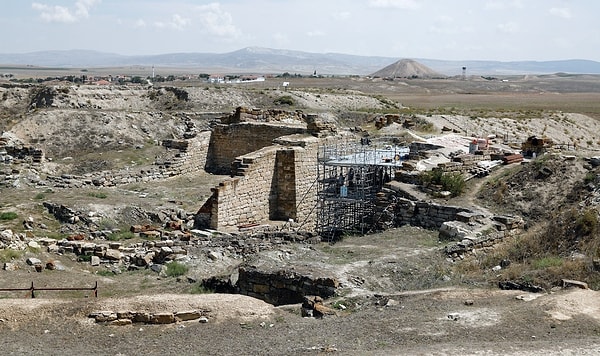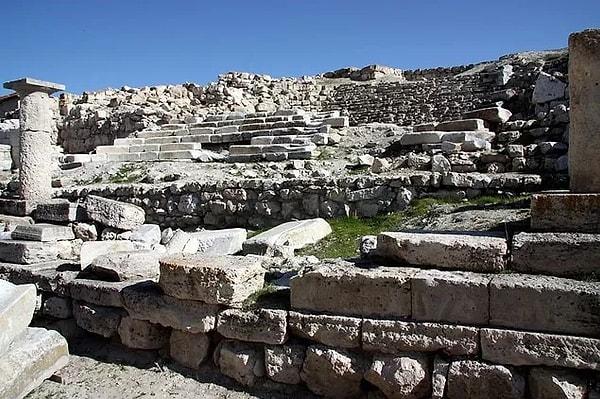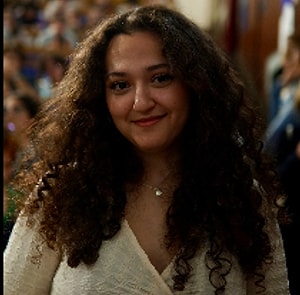Welcome to the historical capital of the Phrygian Civilization - the Ancient City of Gordion. Located in Polatlı, Ankara, this ancient city is a fascinating window into the rich history of Anatolia. Situated at the junction of Sakarya River and Porsuk Stream, Gordion is just 94 kilometers away from Ankara. The village of Yassıhüyük is home to this historical site, which has been the subject of excavations since the 1900s. The first excavations were conducted by Gustav Körte and Alfred Körte, while the second phase took place between 1950-1973, supervised by the Archaeological and Anthropological Museum of the University of Pennsylvania and directed by Rodney Young. Join us as we delve into the captivating history of the Ancient City of Gordion.
The Ancient City of Gordion: A Journey to the Heart of Anatolia's Past

Information About the Ancient City of Gordion

Gordion is an ancient city that is the historical capital of Phrygia. The first excavations were made here in the 1900s by Gustav Körte and Alfred Körte. The second excavations were carried out in 1950-1973 under the supervision of the Archaeological and Anthropological Museum of the University of Pennsylvania and under the direction of Rodney Young.
Gordion is located at the junction of the main roads traversing Anatolia due to its location. It is rich in terms of river and water resources. The surrounding area is also suitable for dry agriculture and animal husbandry. It is thought that the reason why this place is interesting to the Phrygians is that it has opportunities due to its location.
Archaeological findings obtained from here show that the Phrygians came to Gordion at the end of the twelfth century BC as a result of the destruction of the Hittites. Gordion, which has the character of a village consisting of small houses, is undergoing a major transformation in the ninth century BC. The size of the structures is growing and this place is becoming a fortress surrounded by enormous walls. It is said that the change in the city is associated with the creation of a central Phrygian state administration that can carry out the construction of civilization's projects.
Gordion, which has become a castle-city, is destroyed in a big fire in 800 BC. Gordios and his son Midas are renovating the castle and the city with great labor and skill. It is stated that the new castle has served for more than 300 years. Most of the Phrygian written documents belong to the periods when this new castle was built.
After Gordios, the first king of the Phrygians, his son Midas takes over and the Phrygians become a very powerful civilization. In mythology, it is also believed that Midas turned everything he touched into gold.
Many musical instruments today were developed by this civilization. The thousand-year-old motifs on Anatolian rugs date from the Phrygian period. At the same time, the state is very developed in mining and wood processing. It is also a fact that the technology used by the Phrygians, especially in the production of safety pins, was very advanced compared to that period.
They were burned and destroyed by immigrant Cimmerian tribes like themselves in 695 BC. It is said that at this time King Midas committed suicide by drinking ox blood. although they continued as principalities for about 300 years, they were erased from history by the invasion of Anatolia by Alexander the Great. What remains of them is the Ancient City of Gordion, which sheds light on the history of Anatolia today.
Where is the Ancient City of Gordion? How to Get There?
The Ancient City of Gordion is located above the junction of the Sakarya River and the Porsuk Stream. This place is 94 kilometers from Ankara and 29 kilometers from Polatlı. It is possible to provide transportation to the Ancient City of Gordion, located in Yassihüyük in the northwest of the district, by private vehicles and public transportation. You can come to Gordion by cars going to Yassihüyük Village.
If you are coming to Gordion by private car or taxi, you can also use the following address and location information.
Address: Yassihüyük, 06900 Polatlı/Ankara
Visiting Hours and Entrance Fees of the Ancient City of Gordion
The entrance fee to the Ancient City of Gordion is 20 TL as of 2022. Museum Card is valid at the entrance.
The visiting hours of the city are as follows:
Opening: 08.30
Closing: 19.00
Box Office Closing: 18.15
Open every day
Since the entrance fee and visit time information may vary, you can get information via the website or phone before you go.
Phone: 03126382188
Website:https://muze.gov.tr/muze-detay?sectionId=GOR01&distId=MRK
Places to Visit in the Ancient City of Gordion
It is known that there has been life in the Ancient City of Gordion for about 4000 years. In this long life, there are countless works left over from the Phrygians. There are 2 big gates of the city, the main entrance gate and the south gate. The foundations of the houses here have also survived to the present day. The most important finds in the city are the hills called tumulus, where nobles and Phrygian kings were buried. There are 128 of these hills in Gordion.
When we come to the Ancient City of Gordion, many points can be visited, especially the museum where the finds extracted from the city are exhibited. The places you can visit are as follows:
Gordion Museum: There are fibulas, bowls, inscriptions and decorative bricks here, especially from the Great Tumulus. In addition to the works of the Great Tumulus or Midas Tumulus, you can also see the works of the Old Bronze Age, Middle Bronze Age, Late Bronze Age, Early Phrygian Age, Early Iron Age, Late Phrygian Age, Lydian, Hellenistic and Roman Periods here.
Pebble Mosaic Conservation: During the excavations here, there is the oldest colored pebble mosaic in the world at the base of the structure dated to the ninth century BC and called Megaron 2.
Goby Mosaic: This mosaic was found during the construction of a house and is on display in the museum.
Galat Tomb: The Galat Tomb located in Kıranharmanı Village is also exhibited in the museum.
Tumuli: The nobles buried their dead in tombs carved into the rock or in hills of masonry tombs called tumuli. These tumuli are common in Ankara and Kestenezdağ regions.
Main Entrance Gate: When you enter through the main castle gate located in the southeast of the city, there are rectangular buildings lined up around the open-top, large courtyard and these make up the palace area.
Palace Area: The pebble stone mosaic floor covering found in the palace area is the oldest example of this type of floor covering known in Antiquity.
South Gate: This is the second largest gate of the city. Although a very small part of the Ancient City of Gordion has been unearthed today, it is one of its important historical values even in this form.

